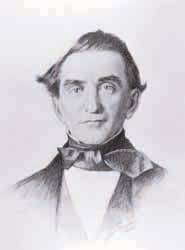Minnesota Historical Society facts for kids

'M' of the Minnesota Historical Society's Logo
|
|
| Formation | 1849 |
|---|---|
| Headquarters | Saint Paul, Minnesota, U.S. |
The Minnesota Historical Society (MNHS) is a special group that works to save and share the history of Minnesota. It's a nonprofit organization, which means it doesn't make money for owners. It was started way back in 1849 by the Minnesota government, even before Minnesota became a state! Its main office is in the Minnesota History Center in downtown Saint Paul.
Even though MNHS focuses on Minnesota's past, it also studies bigger topics like the North American fur trade. Its work on this topic has even been recognized in Canada.
MNHS has a huge collection of historical items. Imagine nearly 550,000 books, 37,000 maps, and 250,000 photos! They also have 225,000 historical objects, 950,000 items found by archaeologists, and many old documents and government records. Plus, there are 5,500 paintings and drawings, and 1,300 old videos.
Since 2011, MNHS has run an online encyclopedia called MNopedia: The Minnesota Encyclopedia. It's a great place to find true information about important people, places, and events in Minnesota's history. The Minnesota Historical Society also has its own publishing company, the Minnesota Historical Society Press (MNHS Press). It's the oldest publishing company in Minnesota and the biggest one run by a historical society in the whole country! They publish over 500 books about Minnesota's history and culture. They also create a quarterly magazine called Minnesota History (journal).
Contents
Discovering Minnesota's Past: The Minnesota Historical Society
How the Minnesota Historical Society Began
The Minnesota Historical Society was officially started on October 20, 1849. It was one of the very first things the Minnesota government did. It was unusual for a historical society to be created so early, even before the area became a state. The governor at the time, Alexander Ramsey, thought it was important to save every newspaper. He believed that collecting history early would make it easier to write about later.
Charles K. Smith, who was the first Secretary of the Minnesota Territory, wrote the plan for the Society. On November 15, 1849, Smith and 18 other people officially organized the group.
Finding a Home for History
When the Society first started, it didn't have its own building. They used different places like the Territorial Secretary's office or even hotel rooms. In 1855, they finally got a room in the Minnesota State Capitol building.
In 1856, the Society was allowed to own as much property as it needed. This meant they could start raising money to build their own special building. Daniel A. Robertson led the committee to raise funds. He sold 62 lifetime memberships to the Society, which brought in $1,500. This money was used to buy two pieces of land for the new building.
On June 24, 1856, they held a big party to celebrate laying the first stone of the new building. Newspapers called it the "grandest gala day" in the city's history. However, just two weeks later, they ran out of money! They had to ask members for more money just to protect the building's foundation from winter. Work on the building stopped because of a big economic problem called the Panic of 1857. Many wealthy Minnesotans lost their money.
New Homes for the Society
The Society continued to work from the Capitol building for many years. In 1913, the Minnesota government gave $500,000 to build a new, fireproof historical building. This building was finished in 1917. The Society moved all its collections there by March 1, 1918. This building is now called the Minnesota Judicial Center.
The Minnesota Historical Society moved to its current home, the Minnesota History Center, in 1992. This is where you can visit them today!
Exploring Minnesota's Historic Sites
The Minnesota Historical Society takes care of 31 historic sites and museums across the state. Twenty-six of these places are open for people to visit. MNHS directly manages 16 sites and works with partners to manage 7 others. Six sites are kept safe for the future but are not open to the public. Five sites are self-guided, meaning you can explore them on your own with signs to help you learn.
Many of these sites are very important. Seven of them are National Historic Landmarks, which are places recognized for their special history. Sixteen others are on the National Register of Historic Places (NRHP). Some sites are even located inside Minnesota state parks or are part of the Mississippi National River and Recreation Area.
Here are some of the amazing historic sites managed by the Minnesota Historical Society:
| Site Name | Image | Location | What You'll See | Year Added to MNHS | How It's Managed | Cool Facts |
|---|---|---|---|---|---|---|
| Alexander Ramsey House |  |
St. Paul | 1872–1964 | 1964 | Direct | This was the home of Minnesota's governor, Alexander Ramsey. You can see his original furniture! It's on the NRHP. |
| Birch Coulee Battlefield |  |
Morton | September 2, 1862 | 1976 | Self-guided | This is where the Battle of Birch Coulee happened. It was a very important battle during the Dakota War of 1862. It's on the NRHP. |
| Charles Lindbergh House and Museum |  |
Charles A. Lindbergh State Park | 1906–1920 | 1969 | Direct | This was the home of famous aviator Charles Lindbergh and his father. It's a National Historic Landmark. |
| Forest History Center |  |
Grand Rapids | 1900–1934 | 1975 | Direct | Here you can see a recreated logging camp and learn about how people used Minnesota's forests. |
| Fort Ridgely |  |
Fort Ridgely State Park | 1853–1867 | 1969 | Self-guided | This fort was built to keep peace near a Dakota reservation. It was attacked during the Dakota War of 1862. It's on the NRHP. |
| Grand Mound |  |
International Falls | 200 BCE–1400 | 1970 | Preservation | These are five ancient burial mounds. One is the largest prehistoric structure in the Upper Midwest, 25 feet high and 100 feet wide! It's a National Historic Landmark. |
| Harkin Store |  |
New Ulm | 1870–1901 | 1973 | Direct | This old General store from the 1870s still has many of its original items on display. It's on the NRHP. |
| Historic Fort Snelling |  |
Fort Snelling State Park | 1820–1946 | 1969 | Direct | Parts of this fort look just like they did when it was first built. Later, it was used to train soldiers in World War II. It's a National Historic Landmark. |
| James J. Hill House |  |
St. Paul | 1891–1921 | 1978 | Direct | This huge house belonged to James J. Hill, a very important railroad builder. It's a National Historic Landmark. |
| Jeffers Petroglyphs |  |
Jeffers | 3000 BCE–1750 | 1966 | Direct | Here you can see ancient carvings, called petroglyphs, made by Native Americans on rocks. It's on the NRHP. |
| Lower Sioux Agency |  |
Lower Sioux Indian Reservation | 1853– | 1967 | Partnership | This museum shows what life was like for the Dakota people before and after the Dakota War of 1862. It's on the NRHP. |
| Mill City Museum |  |
Minneapolis | 1874–1965 | 2002 | Direct | This museum is about the flour milling industry that helped build Minneapolis. It's inside the ruins of an old mill, which is a National Historic Landmark. |
| Mille Lacs Indian Museum |  |
Mille Lacs Indian Reservation | Prehistory–present | 1959 | Direct | This museum teaches about the history and culture of the Mille Lacs Band of Ojibwe people. |
| Minnesota History Center |  |
St. Paul | Prehistory–present | Direct | This is the main headquarters of the Minnesota Historical Society. It has exhibits about Minnesota and a library. | |
| Minnesota State Capitol |  |
St. Paul | 1905–present | 1969 | Direct | You can take tours and see exhibits about Minnesota's government here. It's on the NRHP. |
| Oliver Kelley Farm |  |
Elk River | 1850–1901 | 1961 | Direct | This is the old farm of Oliver Hudson Kelley, who helped start a big farming organization. It's a National Historic Landmark. |
| Split Rock Lighthouse |  |
Split Rock Lighthouse State Park | 1910–1969 | 1976 | Direct | This beautiful lighthouse on Lake Superior looks just like it did in the 1920s. It's a National Historic Landmark. |
More Ways to Learn About History
The Minnesota Historical Society also has many online resources. You can find digital history books on their website.
See also
- List of historical societies in Minnesota



